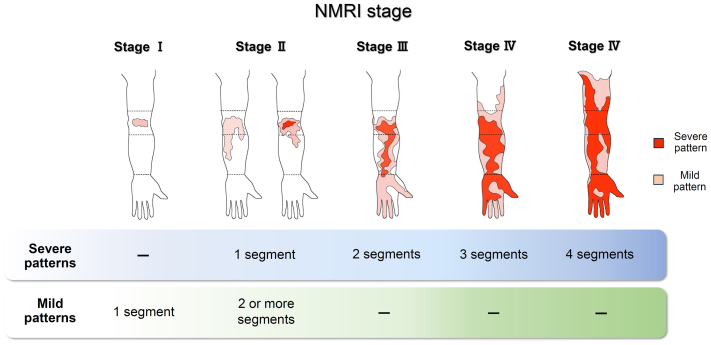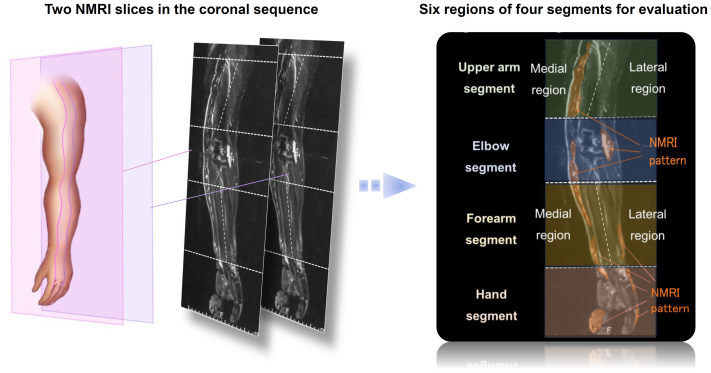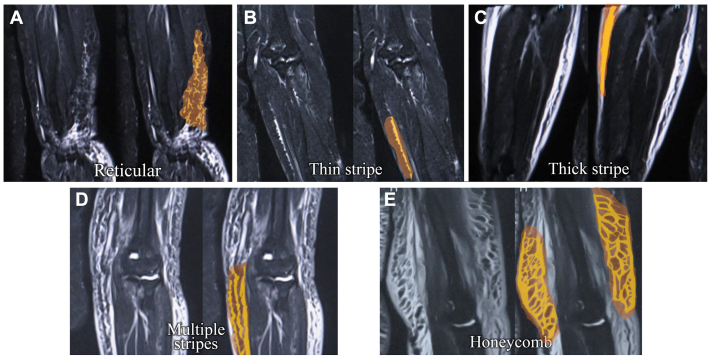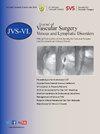Noncontrast magnetic resonance imaging-based evaluation of quality of life in secondary upper extremity lymphedema
IF 2.8
2区 医学
Q2 PERIPHERAL VASCULAR DISEASE
Journal of vascular surgery. Venous and lymphatic disorders
Pub Date : 2025-03-04
DOI:10.1016/j.jvsv.2025.102220
引用次数: 0
Abstract
Objective/Background
Noncontrast magnetic resonance imaging (NMRI) has emerged as an efficient tool for evaluating fluid infiltration in upper extremity lymphedema (UEL). This study aimed to examine the relationship between quality of life (QOL) in UEL and regional fluid infiltration on NMRI.
Methods
A single-center retrospective observational study was conducted involving 65 patients with secondary UEL who underwent NMRI and ICG-L between 2017 and 2021. The presence of NMRI findings (reticular, thin stripe, thick stripe, multiple stripes, and honeycomb) in six regions of the upper arm and the NMRI stage were compared with Lymphedema Quality of Life Score (LeQOLiS), Quick Disabilities of the Arm, Shoulder and Hand (DASH) scores, ICG-L stage, International Society of Lymphology stage, and UEL index.
Results
NMRI patterns were observed in 276 of 390 regions (70.8%) of 62 of 65 patients (95.4%). Thin stripe was most significantly associated with the greatest number of items (7/10) constituting the LeQOLiS score. Thick stripe had the most significant relationships with heaviness (rs = 0.40; P < .001) and distention (rs = 0.29; P = .021), and multiple stripes had the most significantly associated with the appearance distortion (rs = 0.37; P = .002). The hand localization of thin stripe was significantly correlated with worsening of the greatest number of 7 of 11 items on the Quick DASH, and the upper arm localization of thin stripe was related with 4 of 10 LeQOLiS items. The higher NMRI stage was associated significantly with the deterioration of the total score (P = .012) and six items in the LeQOLiS and two items on the Quick DASH. A higher NMRI stage had significant correlations with the advancement of the ICG-L stage and UEL index (rs = 0.83 [P < .001] and rs = 0.65 [P < .001], respectively).
Conclusions
The greater total number of thin stripes in the upper limb has potential as an indicator of overall deterioration of quality of life in UEL patients. The hand and upper arm localization of thin stripe had significant associations with hand-related functional disability and lymphedema-specific symptoms, respectively.



基于非对比磁共振成像评价继发性上肢淋巴水肿患者的生活质量。
目的:非对比磁共振成像(NMRI)已成为评估上肢淋巴水肿(UEL)液体浸润的有效工具。本研究旨在探讨UEL患者生活质量(QOL)与NMRI局部液体浸润的关系。方法:采用单中心回顾性观察研究,纳入2017年至2021年间接受NMRI和ICG-L检查的65例继发性UEL患者。将上臂6个区域的NMRI表现(网状、细条纹、粗条纹、多条纹和蜂窝状)和NMRI分期与淋巴水肿生活质量评分(LeQOLiS)、手臂、肩膀和手的快速残疾(DASH)评分、吲胺绿淋巴造影(ICG-L)分期、国际淋巴学会(ISL)分期和UEL指数进行比较。结果:62/65例(95.4%)患者中,有276/390个区域(70.8%)出现NMRI模式。细条纹与构成LeQOLiS得分的最大项目数(7/10)最显著相关。粗条纹与体重(rs = 0.40, P < 0.001)和腹胀(rs = 0.29, P = 0.021)的关系最为显著,而多条纹与外观畸变的关系最为显著(rs = 0.37, P = 0.002)。细条纹的手部定位与Quick DASH中7/11项最大数量的恶化显著相关,而上臂定位与4/10项LeQOLiS相关。NMRI分期越高,总评分越差(P = 0.012), LeQOLiS评分为6项,Quick DASH评分为2项。NMRI分期越高,ICG-L分期越早,UEL指数越高(rs = 0.83, P < 0.001)。结论:上肢细纹总数的增加有可能作为UEL患者总体生活质量恶化的指标。细条纹的手部和上臂定位分别与手部相关功能障碍和淋巴水肿特异性症状显著相关。
本文章由计算机程序翻译,如有差异,请以英文原文为准。
求助全文
约1分钟内获得全文
求助全文
来源期刊

Journal of vascular surgery. Venous and lymphatic disorders
SURGERYPERIPHERAL VASCULAR DISEASE&n-PERIPHERAL VASCULAR DISEASE
CiteScore
6.30
自引率
18.80%
发文量
328
审稿时长
71 days
期刊介绍:
Journal of Vascular Surgery: Venous and Lymphatic Disorders is one of a series of specialist journals launched by the Journal of Vascular Surgery. It aims to be the premier international Journal of medical, endovascular and surgical management of venous and lymphatic disorders. It publishes high quality clinical, research, case reports, techniques, and practice manuscripts related to all aspects of venous and lymphatic disorders, including malformations and wound care, with an emphasis on the practicing clinician. The journal seeks to provide novel and timely information to vascular surgeons, interventionalists, phlebologists, wound care specialists, and allied health professionals who treat patients presenting with vascular and lymphatic disorders. As the official publication of The Society for Vascular Surgery and the American Venous Forum, the Journal will publish, after peer review, selected papers presented at the annual meeting of these organizations and affiliated vascular societies, as well as original articles from members and non-members.
 求助内容:
求助内容: 应助结果提醒方式:
应助结果提醒方式:


